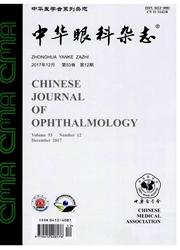

 中文摘要:
中文摘要:
目的 对一个马凡综合征家系进行FBN1基因突变筛查,探讨该家系的分子发病机制.方法 在征得患者知情同意下,采集家系中四名患者及两名正常个体外周静脉血5毫升,提取基因组DNA.采用直接测序法对FBN1基因全部65个外显子,以及外显子内含子拼接部进行序列分析.Polyphen程序分析FBN1基因突变引起的蛋白结构和功能改变.结果 通过基因突变筛查,发现该家系所有患者均携带有c.2261A>G(p.Y754C)突变体,而患者家中正常个体及100名正常对照无此突变.经Polyphen程序分析,此突变将导致FBN1蛋白结构和功能的改变.结论 FBN1基因突变体p.Y754C是导致该马凡综合征家系的致病原因,此突变首次在中国马凡综合征患者中发现.
 英文摘要:
英文摘要:
Objective To identify FBN1 gene mutations in a Chinese family with Marfan syndrome.Methods Four affected and two unaffected individuals in the family were recruited after informed consent.Five ml blood samples were drawn from each family member and genomic DNA was extracted. Mutations were detected by directly sequencing to the whole coding region and exon-intron boundaries of FBN1 gene.Polyphen program was used to predict the functional and structural changes of the mutant protein. Results We found all four affected individuals carried FBN1gene mutations, c. 2261A 〉 G ( p. Y754C), in exon18 by sequence analysis, while two unaffected family members and 100 normal controls did not have this mutation. A PSIC score of 2. 6 was acquired by Polyphen program analysis. Conclusion Our study supports that FBN1 gene mutation, c. 2261A 〉 G (p. Y754C), is the underlying molecular pathogenesis of this family with Marfan syndrome. This mutation is identified for the first time in Chinese population.
 同期刊论文项目
同期刊论文项目
 同项目期刊论文
同项目期刊论文
 期刊信息
期刊信息
